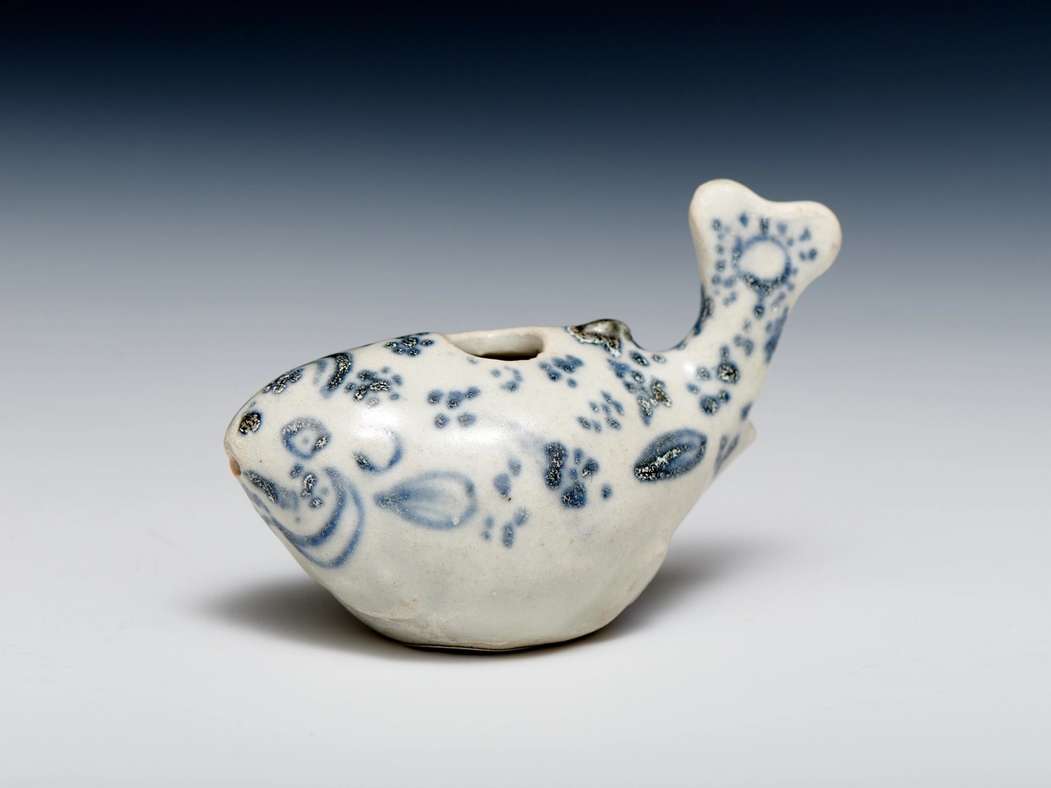Click the above image to zoom
Vietnamese ceramic water dropper in the form of a pufferfish kilns in Hai Duong province, north Vietnam, 15th century.
Stock Number: 5255
Very rare Vietnamese ceramic water dropper in the form of a pufferfish decorated in underglaze cobalt blue, kilns in Hai Duong province, north Vietnam, 15th century, Primitive Le dynasty (1428-1527), w. 9cm, 3½ in; 5 cm, 2 in. 8-21092 Bespoke box.
Literature:
• Treasures from the Hoi An Hoard, Important Vietnamese Ceramics from a Late 15th/Early 16th Century Cargo, Butterfields sale catalogues, 11th to 13th October 2000, lot 1764 and 1769;
• Vietnamese Ceramics: A Separate Tradition, by John Guy from Victoria & Albert Museum, London, John Stevenson from Seattle Art Museum, and Louise Cort from Smithsonian National Museum of Natural History;
• Dragons and Lotus Blossoms: Vietnamese Ceramics from the Birmingham Museum of Art, essays by John Stevenson, Philippe Truong and Don Wood.
• Provenance: This water dropper is one of 98 sold in lots 1764 to 1769 at Butterfields, CA, USA, on the 11/13 October 2000.
◆ Few people in the West know that Vietnam is one of only three countries (Vietnam, China and Japan) who manufactured and exported ceramics to other Asian countries. After the Vietnam independence in the late 10th century, the manufacture of ceramics, which started in the 1st century, was based in the north of the country and showed their individuality with own characteristics and patterns. Recent archaeological excavations at Dazaifu, Northern Kuyshu in Japan, found Vietnamese ceramics associated with pieces of wood and dated in “Daitoku the 2nd Year (1330)” which are considered the earliest evidence on ceramics exported from Vietnam to foreign (Asia) markets.
In 2000 fisherman pick up a large number of Vietnamese and Chinese ceramics. Museum staff assumed that there was a shipwreck and designated the site as the Ca Mau II shipwreck (1450/1480). The Chinese ceramics were of Jingdezhen blue and white and Longquan celadon wares of Yuan Dynasty dated to the 14th century. The excavations at the largest known Vietnamese shipwreck were done by a consortium composed by the Vietnamese Government and the Maritime Archaeological Research Unit of the University of Oxford, under the Directorship of Mensun Bound, Triton Senior Research Fellow, Saint Peter’s College, Oxford.



